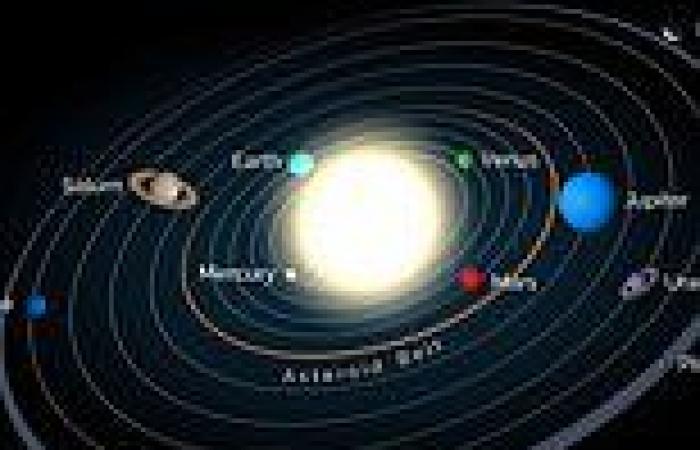Our early solar system had a gap between its inner and outer regions even when it was just a swirling mass of gas and dust, a new study reveals.
The mysterious gap, described as a 'cosmic boundary', existed around 4.567 billion years ago, when the solar system had just formed.
It grew to form what is today the gap between Mars and Jupiter, separating the inner and outer planets.
The study was conducted by experts at Massachusetts Institute of Technology (MIT), based on analysis of ancient meteorites – fragments of asteroids that have fallen to Earth from space.
Researchers don't know exactly what created the gap, but it could have been caused by a young Jupiter or a wind from the solar system emerging.
It's already well known that the first four planets (Mercury, Venus, Earth and Mars) form the inner solar system, while the last four (Jupiter, Saturn, Neptune and Uranus) make up the outer solar system.
Currently, the dividing gap between Mars and Jupiter, where the asteroid belt lies, is 3.68 astronomical units (342.24 million miles).
But this isn't even the largest gap between two adjacent planets – the greatest average distance between two planets today is between Uranus and Neptune, at 10.88 astronomical units (AU), equivalent to 1.01 billion miles.
The authors of this new study can't determine the size of the historical gap, which was merely a hole in the protoplanetary disk, but it would have been much smaller than it is now.
The protoplanetary disk, a swirling mass of dust and gas, rotated around the sun and eventually coalesced into the planets we know today.

It's well known the first four planets (Mercury, Venus, Earth and Mars) form the inner solar system, while the last four (Jupiter, Saturn, Neptune and Uranus) make up the outer solar system. The dividing gap between the inner and outer solar system was bigger than it is today, experts report. Planet Nine is a hypothetical planet that may have existed, other studies say
This physical separation from the gap could have shaped the composition of the solar system's planets, by keeping material on either side of it from interacting.
For instance, on the inner side of the gap, gas and dust coalesced as terrestrial planets, including the Earth and Mars, while gas and dust relegated to the farther side of the gap formed in icier regions, as Jupiter and its neighbouring gas giants.
'It's pretty hard to cross this gap, and a planet would need a lot of external torque and momentum,' says lead author and EAPS graduate student Cauê Borlina.
'So, this provides evidence that the formation of our planets was restricted to specific regions in the early solar system.'
The cause of such a gap in our own solar system remains a mystery, but one possibility is that Jupiter may have been an influence.
As the gas giant took shape, its immense gravitational pull could have pushed gas and dust toward the outskirts, leaving behind a gap in the developing disk.
'Over the last decade, observations have shown that cavities, gaps, and rings are common in disks around other young stars,' said Benjamin Weiss, professor of planetary sciences in MIT's Department of Earth, Atmospheric, and Planetary Sciences (EAPS).
'These are important but poorly understood signatures of the physical processes by which gas and dust transform into the young sun and planets.'
Another explanation for the historical gap may have to do with winds emerging from the surface of the protoplanetary disk.
Early planetary systems are governed by strong magnetic fields. When these fields interact with a rotating disk of gas and dust, they can produce winds powerful enough to blow material out, leaving behind a gap in the disk.
Over the last decade, scientists have observed a curious split in the composition of meteorites that have made their way to Earth.
These space rocks originally formed at different






